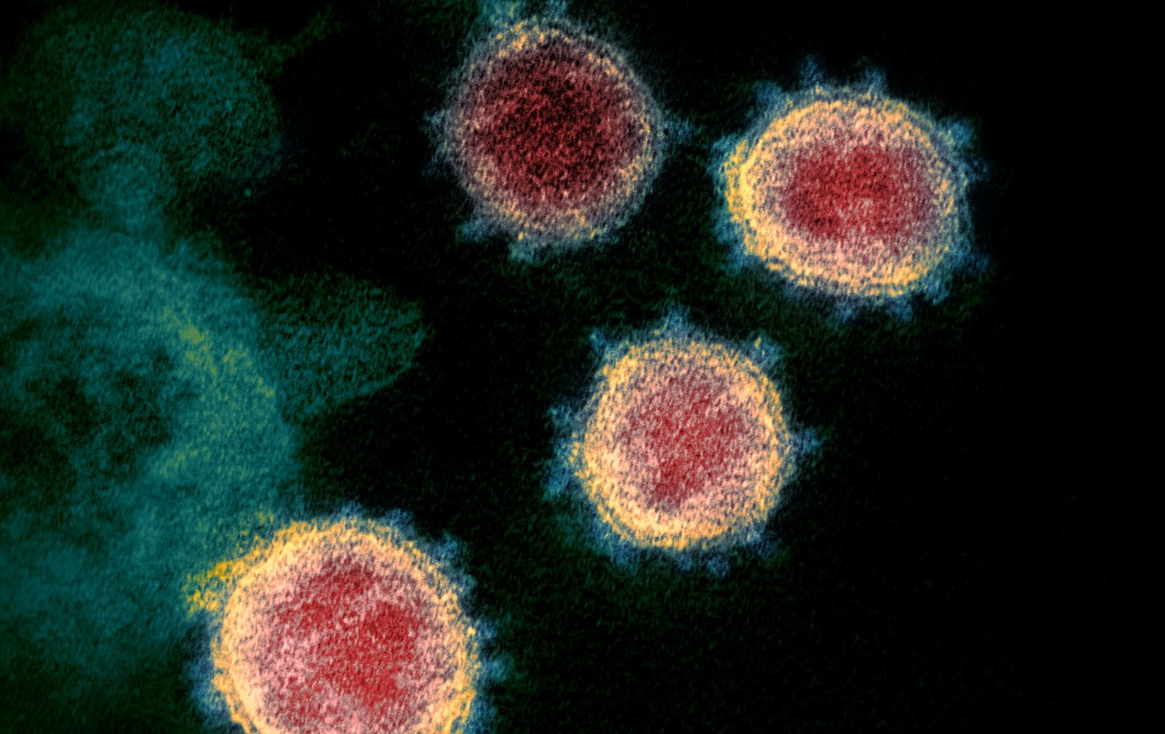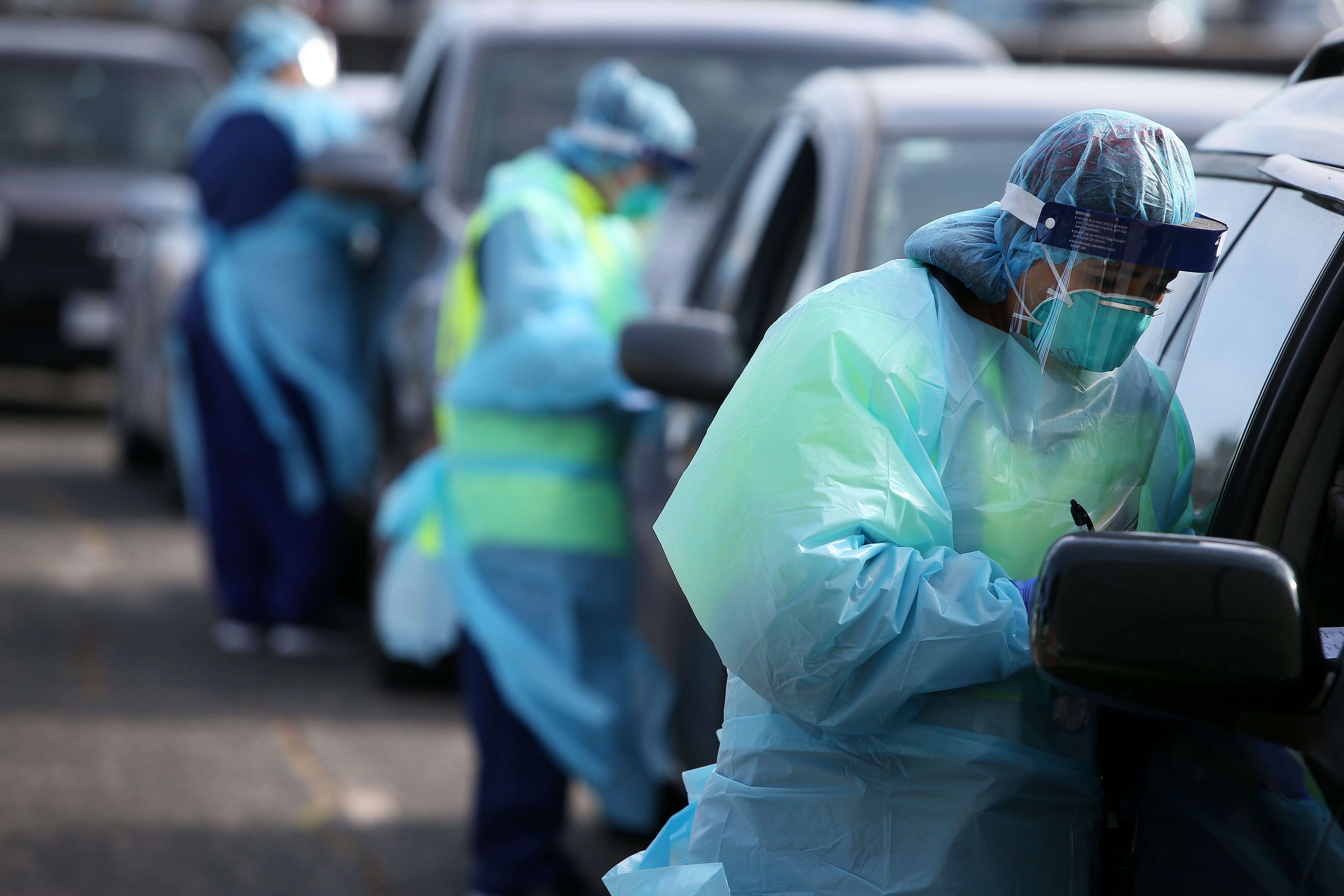
Health & Medicine
Modelling Victoria’s escape from COVID-19

Epidemiologist Professor Tony Blakely gives Victoria’s Roadmap out of the COVID-19 restrictions 8 out of 10 – noting there may be scope for easing some restrictions sooner
Published 13 September 2020
The announcement of the Victorian Roadmap out of COVID-19 restrictions was widely anticipated, and harrowing, by all Victorians.
I was one of a team of four from the University of Melbourne and New England University that provided the rapid modelling of scenarios for Victorian Department of Health and Human Services to help guide their Roadmap.
We weren’t the only input, but an important input.

None of the four of us had seen the Roadmap before it was announced. Our anticipation was perhaps even more eager than the average Victorian – which was high enough.
The major job we were tasked with was the hard one – modelling the impact of a step down from something like the previous Stage 3 restrictions (Victoria is currently in stricter Stage 4 restrictions) to a stage of easier restrictions we can call Stage 2.
What should the targets be?

Health & Medicine
Modelling Victoria’s escape from COVID-19
Our modelling suggested that releasing from Stage 3 restrictions to a Stage 2 while the 14-day average for new cases was running at 25 per day would result in a 62 per cent probability of a third wave of infection by Christmas.
Releasing from Stage 3 to Stage 2 when the 14-day average was just 10 cases a day reduced the probability of a third wave to 10 per cent, while at just five cases per day the probability fell to three per cent.
We knew our modelling was good, but no model is perfect.
Modelling the future always includes some degree of crystal ball gazing. We all do it. You flick the switch and you are 99.99 per cent sure the light will come on. You listen to the weather forecast, and you are maybe 70 per cent sure the clothes you’ve hung out on the line will be dry before the forecast afternoon showers arrive.
But this modelling was about life and death, peoples’ liberty, and the economy – not just clothes on the line.

My declarations declared, what do I make of the Roadmap? Well, I give it eight out of 10; very good.
There are five steps in the Roadmap, each setting out different levels of eased restrictions. I cannot fault it – five out of five.
The ideal but unlikely destination is Step 5, or what the government calls ‘COVID Normal’ – should we be so lucky as to eliminate the virus now.
I suspect that Step 3 will be where we spend the most of time in between now and when a vaccine arrives – the trigger for Step 3 is achieving a 14-day average of less than five new cases per day, but more on that in a moment.

The restrictions and settings within each step look sensible in their balance of workers allowed to go to work but working from home if they can, al fresco dining quotas, retail reopening with density quotas and cleaning requirements, as well as home visiting bubbles, and so on.
There are five triggers for the transition to these five steps.
Triggers to go to Steps 1 and 2 look good. Metro Melbourne looks well on track to get to a 14-day average of 30-50 cases or less before 28 September for Trigger 2 – possibly even a week earlier based on a simple exponential extrapolation of counts in the last 10 days.
Jumping to the end, the triggers to go to the last Step and COVID-Normal (that is; an end to restrictions but with COVID-normal safety initiatives like some venues recording contact details and possibly mask wearing) at first glance look tough – no new cases for two weeks to go to Step 4 and no new cases for 28 days to get to Step 5.
Is it elimination by stealth? Yes and no.
You would only go into these near-normal stages if one was on the cusp of, or actually achieving, elimination of community transmission.
So, after thinking it through, they make sense – if we are clear that it is zero mystery cases; this assumes mystery cases are defined as locally-acquired cases with no known source (the definition of which is currently not clear). Although the hard reality is that the chance of us achieving elimination is remote now.

Unless we have a good dose of good luck, don’t expect to be spending any time in COVID-Normal (aka Stage 0) before there is a vaccine, and wish only for a few precious weeks in Step 4 (aka Stage 1) – hopefully straddling Christmas and New Year’s Eve.
What hasn’t been discussed in the media – and needs to be – is that aggressive suppression can achieve elimination, with a probability proportional to how aggressive it is.
So, if we stick to five cases a day before releasing to Step 3 (compared to say 10 or 20 per day), this will mean we have a higher chance of elimination – should that be our goal. Elimination may be less of an imperative now, given we are closer to a vaccine, and New South Wales (NSW) seems to be living with low virus levels satisfactorily.
Which only leaves one trigger – moving to Step 3.
This is the one we were charged with focusing on in our modelling. It’s also the one everyone is focusing on and using to judge the Roadmap.

Politics & Society
Why we should grant patents on COVID-19 vaccines
As pointed out earlier, the trigger proposed in the Roadmap to get to Step 3 is a 14-day average of less than five cases per day, and less than five mystery cases in total over the last 14 days.
Ouch – that is tough. By this standard, NSW wouldn’t be at this step.
Our modelling suggested that easing too soon from Step 2 (that is from Stage 3-like restrictions) increases the risk of a lockdown by Christmas. But while our model is clever, it’s not so clever that it can incorporate all nuance.
For example, mystery versus non-mystery cases, and being able to isolate clusters of highly interconnected cases from more disperse cases.
That requires expert judgement.
If we can keep mystery cases low and keep clusters isolated, and we are mostly aiming for tight suppression with elimination only as a welcome bonus, then I think we could relax the trigger for getting to Step 3.

Moreover, we should recognise the growing expertise of our public health workforce to sledgehammer outbreaks early, and contact trace. And we could evolve to smart mask policy including requiring better fitting masks on public transport and busy indoor environments.
These factors should increase our protection from a resurgence.
These tweaks – I argue – could see us transition safely to Step 3 at a higher threshold than five cases on average per day, and considerably earlier than the October 26 target, without too much increased risk.
So, that is a score of three out of five on Triggers: one point lost for that all important transition to Step 3, and half a point off for each of the next two Triggers due to lack of clarity about mystery cases.
A total score of 8 out of 10.
Overall, this Roadmap is good. It is transparent. And we can tweak it to become even better as we go.
Banner: Getty Images